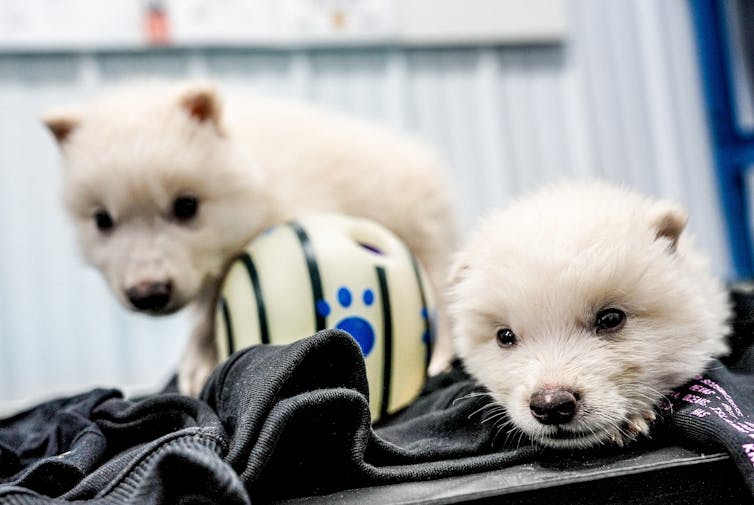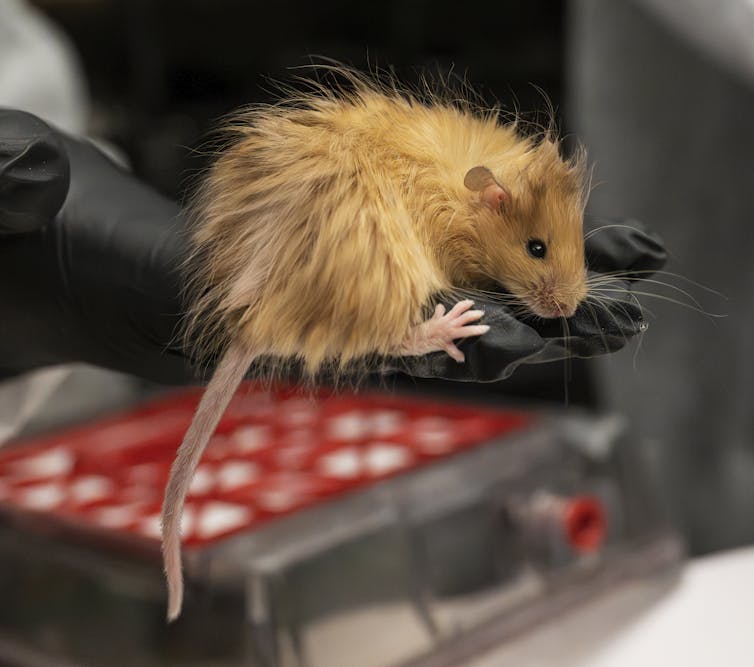The “Return” of the terrible wolf is an impressive achievement in genetic engineering, not the opposite of extinction

[ad_1]
Its headquarters Colossal Biotechnology Company It has been announced The birth of three as a result DIRE WOLVES’s DNA signatures, one of the famous predators that were last seen wandering in North America more than 10,000 years ago.
With their names, Romulus, Remus and khaleesi, these puzzles play on cultural imagination, and they mix ancient myths with fictional imagination. Romulus and Remus’s gesture to the legendary founders of Rome, which the wolf grew up, while Khalisi raises the terrible Game of Thrones.
It is a resurrection story that is released for the main headlines, but under the dramatic narration lies a more accurate and scientific story. The birth of this puppies is not the return of extinct species. Instead, it is evidence of the extent that we have reached in the group of artificial biological tools (a field that includes redesign systems in nature), and a reminder of the extent that we are still really extinct.
Colossal works in the footsteps of its other prominent project: the efforts made to revive the Sufi mammoth. It was also discussed in a previous conversation article, this project started with mice that carry huge genes-early evidence that genetic liberation can one day produce cold-resistant elephants with mammoth-like properties. The WOLF DIRE project is a similar exercise in the technological capabilities, not the biological resurrection.
So what exactly happened in the laboratory? Scientists in Colossal Old DNA extract One of the terrible wolf residue, including 13,000 teeth and bone ear, 72,000 years old. Among these samples, they hiered the genome (the complete complement to the DNA in the cells) and compared them with the modern gray wolf.
Determine approximately 20 genetic differences that were the key to the appearance of the extinct animal. These differences represent small adjustments in the genetic code known as the multiple nucleotides, or SNPS.

Copyright: huge
Then this SNPS specified in the gray wolf genome was released using CRISB-CAS9A strong genes editing tool that allows accurate adjustments at the DNA level. The modified cells are used to create embryos, which are planted in alternative home dogs. The puppies that have been born show some features that are believed to be distinctive wolves: wider shoulders, larger bodies and pale coats.
However, this raises an important question: How different is this animal, really?
To understand the restrictions imposed on this approach, think about our closest relatives in the animal kingdom: chimpanzee. Humans and chimpanzees Participate about 98.8 % From their DNA, however, behavioral, cognitive and physiological differences are clearly deep. While 98.8 % looks very similar, this translates into approximately 35-40 million differences in the pairs of the DNA base.
Now, keep in mind that the evolutionary division between terrible wolves and gray wolves has occurred more than 300,000 years ago – and the population will genetically escape for a longer period before that. This means that there is a lot of genetic differences between terrible wolves and gray wolves. The liberation of 20 SNPS – out of billions of foundations – is a little change in evolutionary terms.
The result? These animals may look like terrible wolves, but they are not harsh wolves. They are gray wolves with some cosmetic adjustments. In this light, the project represents a great display of genetic engineering, rather than a literal revival of extinction types.
However, this is still an unusual achievement. Used DNA extract from old remains, and their sequence, and to determine the significant genetic variables and edit them successfully, then raising animals based on that information, all of which are worthy of celebration.
Positive applications – risks
You can find the technologies that have been sharpened in this project, especially for endangered species that suffer from a genetic bottle bottle.
This work also expands the limits of what artificial biology can do. The ability to communicate with certain features inside or outside the genome is a value not only for scientific curiosity, but it is likely to have public health, agriculture and environmental restoration. But with these new tools, new responsibilities come.

Copyright: huge
What role will these false wolves play in the wilderness? Will they behave like predators that have long been imitated, or simply similar to the inactive form? Ecological systems are accurate interactive networks – a similar creature but not identical to the previous APEX predator that can have unpredictable consequences.
Small wolves It is said Living in a 2000 -acre natural reserve at a secret location. Therefore, while the reserve is surrounded by a 10 -footed fence, wolves have a great room for roaming and they may face another wildlife.
Some researchers argue that instead of chasing lost species, we must focus on protecting the biological diversity that we still have. It can be said that the resources poured into the process of getting rid of extinction can be better spent in maintaining habitats, restoring deteriorating ecosystems, and preventing modern extinction.
Wolf’s Colossal is not a resurrection – it is a tradition. But this does not mean that it lacks value. It provides a glimpse of the possibilities of genetic sciences, and raises basic questions about what we mean when we say that we “repeat” extinct species.
But in the end, it is not about whether we can return the dead. It relates to what we do with the ability to reshape the neighborhoods.
